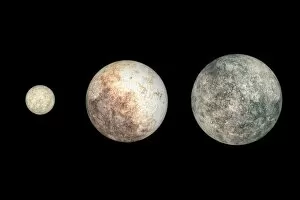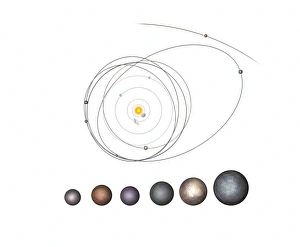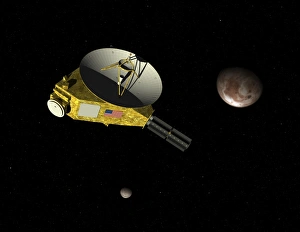Plutoid Collection
"Exploring the Enigmatic Plutoid: Unveiling Dwarf Planets and their Mysterious Orbits" In the vast expanse of our solar system
All Professionally Made to Order for Quick Shipping
"Exploring the Enigmatic Plutoid: Unveiling Dwarf Planets and their Mysterious Orbits" In the vast expanse of our solar system, a captivating group of celestial bodies known as dwarf planets have captured our curiosity. Among them, Pluto stands out as a prominent member, accompanied by its loyal moon Charon. As the New Horizons spacecraft embarks on an extraordinary journey towards this distant duo, we are granted unprecedented access to unraveling their secrets. Pluto, once classified as a planet but now redefined as a plutoid due to its unique characteristics, orbits in the far reaches of our solar system alongside other enigmatic dwarf planets like Ceres and Eris. These fascinating worlds challenge our understanding of planetary formation and evolution. As New Horizons approaches Pluto and Charon, it paints an awe-inspiring picture for us back on Earth – an artist's concept capturing their ethereal beauty against the backdrop of space. The grandeur of Pluton is magnified by its big moon Charon while both bask under the watchful gaze of Polaris star. But beyond Pluto lies another intriguing plutoid named Makemake. Nestled in a region beyond Neptune called Kuiper Belt, this distant world beckons us with its mysterious allure yet to be fully explored. The artists' renditions also offer glimpses into these celestial realms - showcasing not only Pluto's atmosphere but also presenting scale comparisons between Earth, Pluto, Charon, and even Earth's own moon. Such visualizations remind us how small we truly are in the cosmic tapestry. With each passing moment aboard New Horizons spacecraft speeding towards this uncharted territory, humanity inches closer to unlocking profound insights about these dwarf planets' origins and composition. As we eagerly await more discoveries from this groundbreaking mission that will forever reshape our understanding of these remote corners of space – let us marvel at the wonders that lie within reach yet remain shrouded in mystery.













